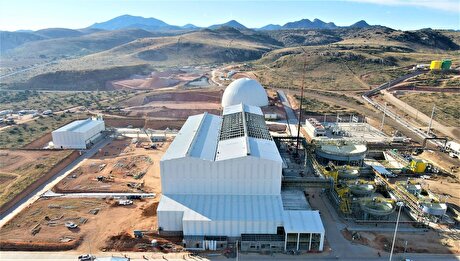
Vale knew about sensor problems at dam before burst – Globo TV


An exchange of emails between executives at Vale, outside auditing firm TÜV SÜD and a third inspection firm on Jan. 23 discussed discrepancies in data obtained from automated instruments installed in the dam, as well as five other such instruments which appeared not to be working," the report said, citing the deposition of a TÜV SÜD engineer, Makoto Namba.
Namba, one of two TÜV SÜD employees who were arrested in the days after the dam burst, said in the deposition that he was not made aware of the discrepancies until after the dam broke.
Namba also said he felt "pressured" by Vale employees to certify the dam that later burst in Brumadinho was stable. He was freed on Tuesday.
Vale declined to comment on the investigation but said it was cooperating with the probe. TÜV SÜD declined to comment on the report, noting that it has hired two law firms to help it probe its role in auditing the dam.
Reuters could not confirm the contents of the deposition.
The deposition was the latest in a series of reports to raise questions about whether there were missed warnings ahead of the dam burst, which unleashed an avalanche of toxic mud onto the surrounding countryside, destroying a corporate dining hall and a country inn among other buildings.
A report Vale commissioned last year from the same firm raised concerns over its drainage and monitoring systems, although it certified the dam as stable.
Reuters reported last week that one Vale executive identified concerns around its tailings dams as early as 2009, although the company did not implement several steps he pointed to that could have prevented or lessened the damage from the Jan. 25 dam collapsed.
(By Christian Plumb; Editing by Lisa Shumaker)
Click here for complete coverage of the dam burst at Vale's Córrego do Feijão mine.


Trump weighs using $2 billion in CHIPS Act funding for critical minerals

Electra converts debt, launches $30M raise to jumpstart stalled cobalt refinery

Codelco cuts 2025 copper forecast after El Teniente mine collapse

Barrick’s Reko Diq in line for $410M ADB backing

Abcourt readies Sleeping Giant mill to pour first gold since 2014

SQM boosts lithium supply plans as prices flick higher

Nevada army depot to serve as base for first US strategic minerals stockpile

Pan American locks in $2.1B takeover of MAG Silver

Viridis unveils 200Mt initial reserve for Brazil rare earth project

Kyrgyzstan kicks off underground gold mining at Kumtor

Kyrgyzstan kicks off underground gold mining at Kumtor

KoBold Metals granted lithium exploration rights in Congo

Freeport Indonesia to wrap up Gresik plant repairs by early September

Energy Fuels soars on Vulcan Elements partnership

Northern Dynasty sticks to proposal in battle to lift Pebble mine veto

Giustra-backed mining firm teams up with informal miners in Colombia

Critical Metals signs agreement to supply rare earth to US government-funded facility

China extends rare earth controls to imported material

Galan Lithium proceeds with $13M financing for Argentina project

Kyrgyzstan kicks off underground gold mining at Kumtor

Freeport Indonesia to wrap up Gresik plant repairs by early September

Energy Fuels soars on Vulcan Elements partnership

Northern Dynasty sticks to proposal in battle to lift Pebble mine veto

Giustra-backed mining firm teams up with informal miners in Colombia

Critical Metals signs agreement to supply rare earth to US government-funded facility

China extends rare earth controls to imported material

Galan Lithium proceeds with $13M financing for Argentina project

Silver price touches $39 as market weighs rate cut outlook

















